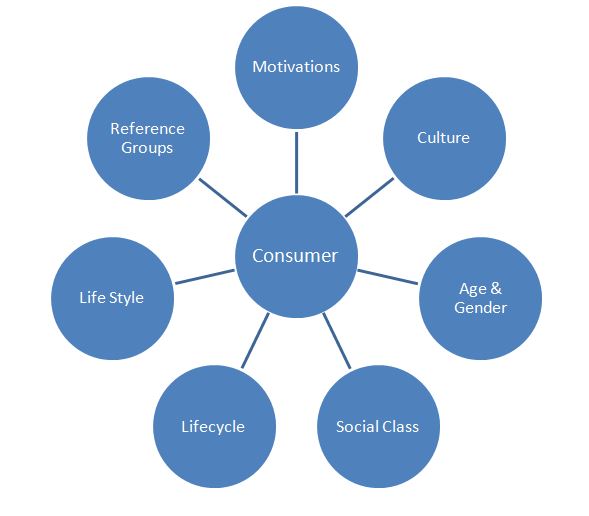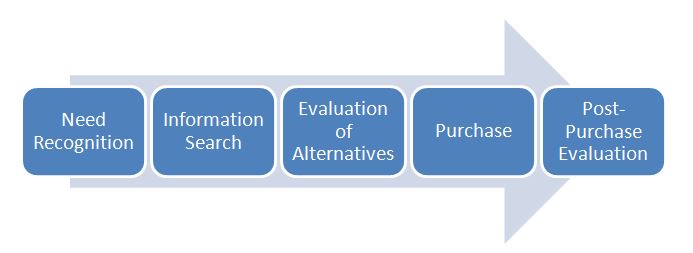Consumer Behaviour

Plog’s tourist motivation model (1974) is a popular framework widely referred to in tourism studies. According to the model tourists can be divided into two broad categories: allocentrics and psychocentrics. Allocentrics usually choose exotic destinations and unstructured tours and vacations they prefer to get involved with local culture to a great extent. Psychocentrics, on the other hand, choose familiar destinations and they usually engage in tourism via packaged tours in a conventional manner (Plog, 1974). The terms of allocentrics and polycentric were later replaced by Plog (1974) to the terms of venturer and dependable respectively, in order to make them more ‘reader-friendly’ (Hudson, 2008). Plog’s (1974) Psychographic Personality Types Source: Hudson (2008), adapted from Plog (1974) and Plog (2002) As it is evident from figure above, according to Plog’s tourist motivation model the majority of tourists can be classified as mid-centric, i.e. they do not belong to neither psychocentric or allocentric categories. Plog’s (1974) Psychographic Personality Types has been criticised for being difficult to be applied because individuals may travel motivated by different factors in different occasions (Hudson, 2008). In other words, an individual may choose an exotic destination for tourism and get closely involved with local culture, yet it may not be appropriate to brand the individual as allocentric because the same person may purchase a conventional tourism package the following year. References Hudson, S. (2008) “Tourism and Hospitality Marketing: A Global Perspective” SAGE Publications Plog, S.C. (1974) “Why Destination areas rise and fall in popularity” Cornell Hotel and Restaurant Quarterly, Vol.14, Issue:4 Plog, S.C. (2002) “The power of psychographics and the concept of venturesomeness” Journal of Travel Research, Vol.40

Different types of tourism can be specified as visiting friends and relatives, religious tourism, social tourism, cultural tourism, hedonistic tourism, special interest tourism, business tourism, health tourism, educational tourism, scenic tourism and activity tourism (Swardbrooke and Horner, 2007). Swardbrooke and Horner (2007) argue that tourism needs to be classified as activity rather than industry. However, this viewpoint can be subjected to criticism because a wide range of activities related to tourism have positive implications to national economies from financial viewpoint, therefore tourism is larger than merely being an activity. Type Numbers Adaptation to local norms Elite Rare Adapts fully Off-beat Uncommon Adapts well Unusual Occasional Adapts somewhat Incipient mass Steady flow Seeks Western amenities Mass Continuous Expects Western amenities Charter Massive Demands Western amenities Smith’s typology of tourists Source: Smith (1977) Alternatively, types of tourism and tourists are divided by King and Hyde (1989) into the following six psychographic type: New indulgers mark a type of tourists who try to escape stress through engaging in new tourism experiences. Tourists belonging to this category tend to be experiential to a greater extent compared to alternative type of tourists discussed below. Anti-tourists are independent, unconventional type of tourists who prefer to explore tourism destinations alone. Anti-tourists usually do not want to be associated with ‘regular’ tourists and they tend to emphasize authenticity of their tourism activities. Big spenders prefer luxury, and therefore they expected extensive and intensive services with their tourism experiences. Big spenders are the main target customer segment for many businesses in tourism industry. New enthusiasts lack experience in tourism. This particular psychographic type of tourists tends to be highly energetic, prefer socialisation and physically demanding recreational activities. Dedicated Aussies/Kiwis are reluctant to travel outside of their home countries for chauvinistic reasons, limited budget and other reasons. Sense of safety…

Generally, factors impacting consumer behaviour include motivations, culture, age and gender, social class, lifecycle, life style, and reference groups etc (Arnould et al., 2002, Agwaral, 2006, Hudson, 2008). Full range of factors impacting consumer behaviour can be divided into psychological, situational, and social categories and each of these categories is discussed in more detail further below. Figure 1. Factors Impacting Consumer Behaviour Psychological and Personal Factors Impacting Consumer Behaviour Psychological factors impacting consumer behaviour include lifestyle, interests, occasions for the use of products and services, benefits sought for the use of products and services etc (Batra and Kazmi, 2008). Personal factors affecting consumer behaviour is related to psychological factors and they include attitudes, motivations, perceptions, occupation ect. Lifestyle is one of the most important consumer variables and an important base for customer segmentation (Majumdar, 2010). Therefore, lifestyle analysis is perceived as one of the critical components of marketing research initiatives. Values and lifestyle systems (VALS) represent framework that divide population into different categories according to psychological factors that are found to be correlated with their purchase behaviour (Assael, 2004). An initial VALS or VALS1 specified eight separate psychographic groups: innovators, survivors, thinkers, makers, achievers, strivers, believers and experiencers. According to VALS framework belonging to each group is associated with specific psychological profile and certain lifestyle. According to Hudson (2008) VALS represents a valuable framework in practical level, because businesses can develop products and services that targets unique needs of individual groups within the framework. However, VALS has been criticised on the grounds of being too abstract and too general and this criticism has caused the development of VALS2 that “classifies people into segments based on whether they control abundant or minimal resources” (Arnould et al., 2002, p.126) Figure 2. VALS2 Figure adapted from Arnould et al. (2002) According to VALS2…

Consumer Behaviour can be defined as “the study of why people buy the products they do and how they make decisions” (Hudson, 2008, p.40). The study of consumer behaviour is not new with economists such as Nicholas Bernoulli, John von Neumann and Oskar Morgenstern initially addressing issues of consumer behaviour about 300 ago. Generally, evolution of consumer behaviour as an important area within the broad field of marketing incorporates the following stages: First stage: economic man approach. The earliest approach to consumer behaviour, economic man approach perceives consumers to be thinking logically and rationally at all times in relation to decision making. According to Arnould et al. (2002) this approach to consumer behaviour has been subjected to criticism due to neglecting irrational aspect of consumer behaviour. Second stage: psychodynamic approach. Psychodynamic approach is mainly based on the work of famous psychologist Sigmund Freud (1856 – 1939) and this approach views consumer behaviour as biological influence of drivers that are beyond rational thinking capabilities of individuals (Blythe, 1997). Specifically, three facets of human psychology are identified as the ID, ego, and superego. Third stage: behaviourist approach. Behaviourist approach to consumer behaviour focuses on the impact of external factors on patterns of behaviour amongst individuals (Neal and Quester, 1997). The majority of literatures discussing behaviourist approach mention experiments conducted by Russian scientist Ivan Pavlov (1849 -1936), where dogs were taught to behave in certain ways in given conditions with organising impact of the same external factor in a repeated manner. Fourth stage: cognitive approach. This approach to consumer behaviour is based on Stimulus – Organism – Response model proposed by Hebb (Bray, 2008). As illustrated in figure below, according to this model once organism is impacted by an external stimulus the response to the stimulus directly affects the nature of the final…
By John Dudovskiy
Category: Consumer Behaviour

The consumer decision making process is complex and involves all the stages from problem recognition to post purchase activities. It has been noted that “the childhood and the human’s development has a crucial impact on personal decision making process” (Sokolowski, 2011, p.1) and the framework of consumer decision making process is found to be addressed by the majority of authors who have addressed the topic of consumer behaviour. All the consumers have their own needs in their daily lives and these needs make them make different decisions. These decisions can be complex depending on the consumer’s opinion about a particular product, evaluating and comparing, selecting and purchasing among the different types of product. Therefore, understanding and realizing the core issue of the process of consumer decision making and utilize the theories in practice is becoming a common view point by many companies and people. There is a common consensus among many researchers and academics that consumer purchasing theory involves a number of different stages. Depending on the different factors and findings, numerous researchers and academics developed their own theories and models over the past years. However, according to Tyagi and Kumar (2004), although these theories vary slightly from each other, they all lead to almost the same theory about the consumer purchasing theory which states that it involves the stages of search and purchase of product or service and the process of evaluation the product or service in the post-purchase product. Five Stage Model initially proposed by Cox et al. (1983) is considered to be one of the most common models of consumer decision making process and it involves five various stages. These stages are: recognition of need or problem, information search, comparing the alternatives, purchase and post-purchase evaluation. This simple model clearly illustrates and explains how the consumers make…

Introduction The 21st century has been dubbed as an information age (Bell and Blanchfower, 2011) and internet in general, and social media in particular are playing an instrumental role in facilitating the spread of information throughout the globe at a rapid speed. Moreover, increasing levels of interactivity of social media platforms is further contributing to the level of their popularity, and nowadays social media has been effectively adopted by many businesses along a wide range of industries as a highly effective marketing and communication platform. At the same time, the level of use of social media varies between various industries, as well as, individual organisations within a particular industry, and while some organisations are beginning to realise substantial opportunities offered by social media, others are already utilising these opportunities to a full extent. This essay contains a critical evaluation of the influence of social media on the popularity of a tourism destination. The essay starts with discussions about increasing influence of social media on consumer behaviour. This is followed by critical analyses of potential benefits of social media to hospitality organisations. Moreover, issues related to negative impacts of social media on the performance of hospitality organisations are also addressed in this essay. Essay is concluded by providing a set of recommendations to strategic and marketing managers of hospitality organisations in terms of benefiting from opportunities offered by social media to a maximum extent. займ онлайн 19 лет Increasing influence of social media on consumer behaviour in service sector Social media can be defined as “websites and applications that enable users to create and share or to participate in social networking” (Oxford Dictionaries, 2013) and social media has had immense impact on personal and professional lives of many people around the globe at various levels. Types of social media include personal and corporate blogs,…

Marketing research can be specified as the main tool to impact consumer behaviour in order to increase the levels of consumer loyalty and achieve long-term growth of the businesses. Marketing research can be divided into the following stages: The first stage is associated with problem definition. Range of marketing research problems related to consumer behaviour may include but not limited to assessment of impacts of prices changes or re-branding initiatives on consumer attitudes, establishing the levels of brand value amongst target customer segment etc. The second stage relates to secondary data collection and analysis. Relevant data available in government publications, statistical information, as well as, findings of previously published marketing research papers can be utilised in an extensive manner during this stage. The third stage in marketing research process refers to collection of primary data. The majority of marketing researches are facilitated through primary data collection and analysis. The most popular methods of primary data collection for marketing research include surveys, focus groups, interviews, storytelling, experiments and observations. Moreover, marketing research can also be conducted with application of conjoint analysis, purchase panels, database marketing and netnography. The fourth stage involves primary data analysis. Data analysis can be qualitative, quantitative or integrated according to the nature of problems being researched. Adoption and maintenance of an objective approach plays important role at this particular stage of marketing research process. The fifth stage is devoted to formulation of recommendations. Specifically, alternative set of recommendations or inter-related recommendations can be offered to senior level management on the basis of primary data analysis. The sixth stage in marketing research process involves selection and implementation of a strategy. In most cases internal or external members of team responsible for conducting marketing research do not engage in implementation of recommendations in practical levels. Therefore, it is important…
By John Dudovskiy
Category: Consumer Behaviour

The topic of consumer behaviour is one of the massively studied topics by the researchers and marketers in the past and still being studied. Researchers show different reasons as to why consumer behaviour has been the topic of many academics and researchers. One of the common views is that understanding consumer behaviour has become a factor that has a direct impact on the overall performance of the businesses (Kotler and Keller, 2012). Another view suggests that understanding consumer behaviour has become crucial especially due to fierce competition in retail industry in the UK and worldwide (Lancaster et al, 2002). This chapter will introduce some other areas of research background of consumer behaviour addressing the works of researchers and marketers. Moreover, consumer decision making process, in particular, five stages of consumer decision making process will be discussed in detail. Introduction It is worth noting that consumer buying behaviour is studied as a part of the marketing and its main objective it to learn the way how the individuals, groups or organizations choose, buy use and dispose the goods and the factors such as their previous experience, taste, price and branding on which the consumers base their purchasing decisions (Kotler and Keller, 2012). One of such studies of consumer buying behaviour has been conducted by Acebron et al (2000). The aim of the study was to analyze the impact of previous experience on buying behaviour of fresh foods, particularly mussels. In their studies the authors used structural equation model in order to identify the relationship between the habits and previous experience on the consumer buying decision. Their findings show that personal habits and previous experience on of the consumers have a direct impact on the consumers’ purchase decision in the example of purchasing fresh mussels. They also found that the image of the…

Motivation, personality and perception belong to the list of central themes in the area of consumer behaviour. Maslow’s Hierarchy of Needs (1943) is one of the most significant theoretical frameworks in the area of human motivation and this theory relates to the study of consumer behaviour in a direct way. Maslow (1943) divides human needs into five layers arranged in a hierarchical manner: psychological, safety, social, and esteem needs. In simple terms, the core idea behind Maslow’s Hierarchy of Needs (1943) can be explained in a way that businesses need to appeal to the most immediate and urgent needs of customers in order to generate sales. For example, an individual who is yet to satisfy his or her safety needs is not motivated to purchase products and services associated with high social status, thus individuals belonging to this category should not be targeted for premium range of products and services. From this perspective, Maslow’s Hierarchy of Needs (1943) is related to segmentation, targeting and positioning practices to a certain extent. Personality represents another important physiological variable with certain implications on consumer behaviour and personality elements or traits include self-confidence, sociability, adaptability, deference etc. In-depth knowledge about important aspects of personalities of target customer segment allows businesses to manipulate with elements of marketing mix in general and promotion element in particular in terms of making an effective appeal. For example, marketing research findings of a premium brand watch manufacturing company may indicate that the majority of representatives of target customer segment are highly ambitious individuals aspiring to top management positions in multinational corporations. This information can be used to impact consumer behaviour by engaging in product placement marketing strategy via displaying the use of the premium watch by highly successful senior managers in various media productions. High levels of subjectivity of…
By John Dudovskiy
Category: Consumer Behaviour

The most popular approaches to consumer behaviour can be divided into cognitive, behaviourist and psychodynamic categories. Cognitive approach to consumer behaviour focuses on information processing capabilities of consumers (Schmitt, 2003). Specifically, according to cognitive approach environment and social experiences provide individuals with abundant information to be processed, and the outcome of information processing results in individuals behaving in certain ways as consumers. For example, individuals may receive information about forecasted economic downturn in a national level and this information can serve as a stimulus to behave in certain manners. Specifically, according to cognitive approach although the forecasted economic downturn has not happened yet, nevertheless consumers may reduce levels of their spending budgets as a response to the stimulus. Behaviourist approach to consumer behaviour, on the other hand, is associated with the impact of external events. Lantos (2010) link this approach to infamous experiments of Russian scientist Ivan Pavlov and these experiments involved developing certain behavioural patterns via external factors. Practical implementation of this approach in the field of marketing can be observed in relation to Nescafe products. Specifically, integrated marketing strategy of Nescafe attempts to foster a specific pattern of behaviour amongst target customer segment whereby consumption of a cup of Nescafe coffee has to be the first thing to do in the morning. Importantly, Loudon et al. (2010) make a clear distinction between cognitive and behaviourist approaches to consumer behaviour in a way that in cognitive approach information from external sources are processed by consumers in apparent manners, whereas in behaviourist approach consumers may not be fully aware of the impact of external environment. Accordingly, Loudon et al. (2010) consider behaviourist approach to be superior compared to cognitive approach in terms of motivating perspective consumers to commit to the purchase. Lastly, psychodynamic approach “includes all theories in psychology that…
By John Dudovskiy
Category: Consumer Behaviour
